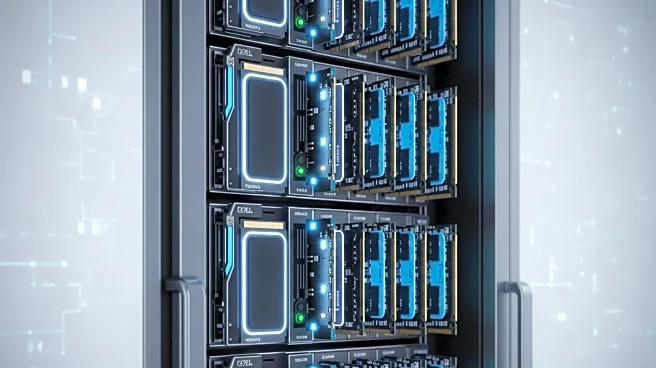What is the story about?
What's Happening?
The demand for AI hardware is leading to predictions of a decade-long surge in SSD and RAM prices. Analysts warn of looming NAND and DRAM shortages, driven by the explosive demand for AI training and inference. Companies like OpenAI have signed significant deals for DRAM wafers, contributing to tight supply conditions. Samsung's next-gen V9 3D NAND memory and Micron's High Bandwidth Memory production are nearly sold out, indicating a 'supercycle' of storage and memory demand. This situation is expected to impact PC gamers and consumers, who may face higher prices for components.
Why It's Important?
The anticipated pricing surge in SSD and RAM components highlights the broader impact of AI on the technology sector. As AI applications expand, the demand for memory and storage increases, potentially leading to higher costs for consumers and businesses. This could affect the affordability and accessibility of technology products, influencing purchasing decisions and market dynamics. The semiconductor industry plays a critical role in supporting AI advancements, and supply constraints could hinder progress and innovation.
What's Next?
The industry may face continued supply challenges as AI demand grows. Companies will need to strategize to manage production and meet market needs. Observers are also considering the possibility of an AI market correction, which could alter demand dynamics. Stakeholders will be watching for developments in AI technology and market trends to assess future impacts on pricing and availability.
Beyond the Headlines
The potential for an AI market correction raises questions about the sustainability of current demand levels. Ethical considerations around AI development and deployment may also influence industry practices and consumer perceptions. Long-term shifts in technology adoption and innovation could be shaped by these pricing trends and market dynamics.
AI Generated Content
Do you find this article useful?















